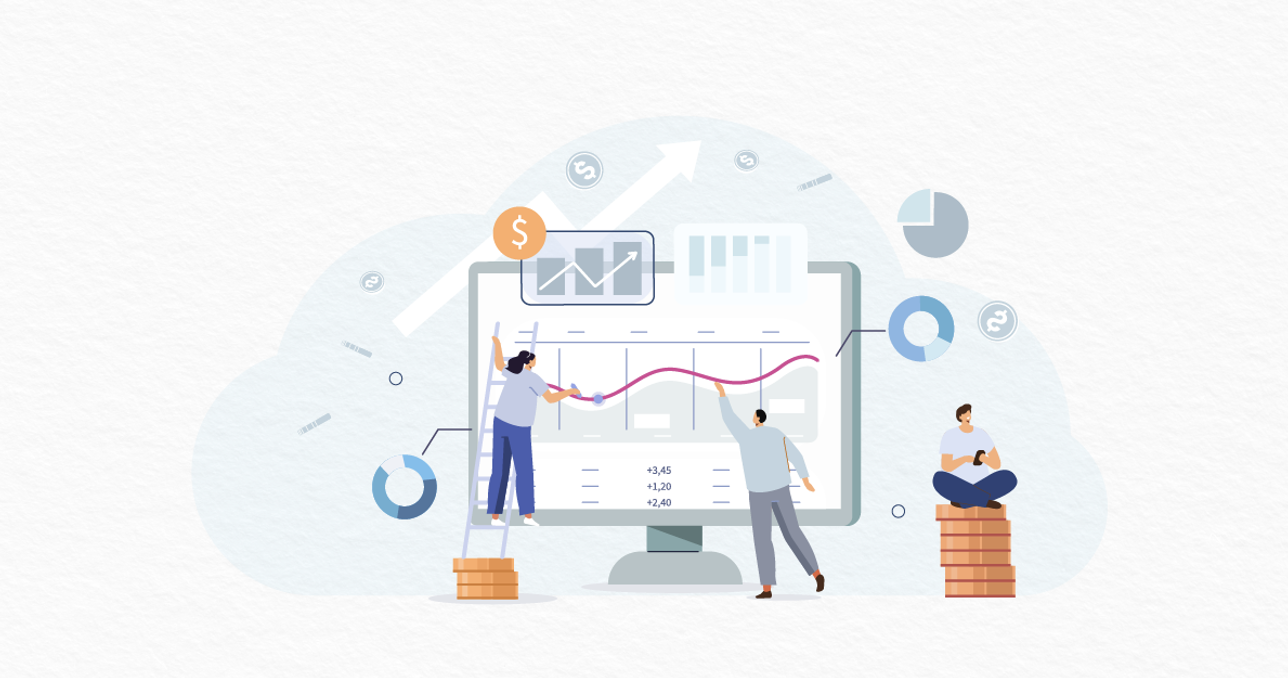Business
The critical role of Cloud Cost Visibility platforms in achieving optimal financial governance

As the cloud infrastructure is forever expanding, so are the complexities of managing cloud costs. This is where cloud cost visibility comes in. Cloud cost visibility means having a holistic perspective of all activities occurring within your cloud network. This enables enhanced control over your cloud infrastructure, allowing you to oversee cloud security, address performance concerns, and optimize cloud expenditure. Now, this service can be utilized with the help of an internal or an external cloud cost visibility platform. Cloud cost visibility platforms have proven essential for tackling cloud costs and achieving optimal financial governance. These tools provide insights, cost transparency, and organizational accountability for businesses to make informed FinOps decisions. This blog focuses on cloud cost tagging and visibility platform features and how you can leverage their benefits.
Platform Features
The cloud cost tagging and visibility platforms provide many features designed to empower your FinOps journey and help you understand, analyze, and help in cloud cost optimization. The features include:
Comprehensive dashboard
The dashboard can examine resource inventory and cloud-related expenses such as data transfers, storage, & computing while delving deeply into the cloud infrastructure. Another benefit of using dashboards is measuring unit costs across more areas of the business than before to understand the value the cloud is providing.
Cost allocation and tagging
Custom labels can be accessed by tagging the profiles, which groups user-defined criteria like resource location, service, and resources. Businesses can organize their cloud data by effectively allocating cloud expenses. They can also quickly and effectively arrange their cloud data, adjust plans, and correctly size resources.
Forecasting and recommendations
Using forecasting, cloud administrators can adjust the plan or adequately allocate resources. Based on past usage trends, users can view projections on how to utilize their cloud resources to lower expenses best and enhance the functionality of their cloud infrastructure. Based on your historical consumption, forecasts at the business unit level provide an approximate total bill amount for the chargeback entities of the current or upcoming month.
Customizable Reports
Cloud cost tagging and visibility platforms provide users with customizable reporting features that let them create in-depth reports based on stakeholder preferences, compliance requirements, and special needs.
Fostering a Culture of Cost Visibility
Global businesses are better equipped to make economical and successful judgments about product development when they have access to detailed, readily available cost data. Cloud cost visibility platforms provide this granular view, which in turn motivates the team members to curb cloud wastage. Additionally, it guarantees that internal functions work together and coordinate their efforts to meet cost targets. Cloud cost tracking and visibility platforms facilitate this cultural shift by:
Promoting Accountability
By providing transparent insights into cloud spending, a decision & accountability structure can be created to close operational cloud cost management gaps between teams. In addition to making cross-functional teams more readily available when they need to act in advance, this method assists in informed decision-making and optimizes cloud costs.
Facilitating Collaboration
Cross-functional engineering, finance, and product teams collaborate to improve financial control and predictability while enabling faster product delivery. This step helps remove blockers, empowers engineering teams to deliver better features, apps, and migrations faster, and allows a cross-functional conversation about where to invest and when.
Driving Cloud Cost Awareness
Cost consciousness needs to be incorporated into both new and old organizational procedures. It is among the fundamental skills required for best cloud cost analytics and optimization practices. To increase cost awareness and provide efficient key performance indicators (KPIs) for finance and business stakeholders, report cloud costs to the technology teams and decision-makers in the business and finance teams.
Real-Time Cloud Insights
One of the most significant advantages of cloud cost tracking and visibility platforms is they offer real-time insights into resource utilization, performance metrics, and operational data. By leveraging real-time data analytics and visualization tools, organizations enable:
Cost anomaly detection
Identifying cost anomalies is a valuable feature of cloud cost management solutions. This function can identify sudden or odd fluctuations in your cloud expenses. The tool, for instance, would establish a baseline for your cloud consumption and expenditure and, using machine learning, will pinpoint unusual spending and its underlying reasons so you can act promptly.
KPI tracking
KPIs show you how successfully your cloud’s various elements are performing. Monitoring them over time guarantees that your systems are getting better on several fronts. By gathering and evaluating KPI data, management can make data-driven decisions that enhance a cloud migration strategy over time. Neglecting to assess this crucial information could lead to significant long-term cloud challenges.
Data-Driven Decision-Making
Data-driven decision-making strongly emphasizes using data, measurements, and facts to inform critical decisions. Rather than basing decisions on experience, opinion, or gut instinct, a decision-maker will use historical data to assess trends and make decisions based on what has worked in the past.
Conclusion
In conclusion, cloud cost tagging and visibility platforms play a critical role in achieving optimal financial governance in the cloud. By offering advanced features, fostering a culture of cost visibility, and providing real-time insights, these platforms empower organizations to optimize costs, drive accountability, and capitalize on the full potential of cloud computing. As businesses continue to embrace the cloud, investing in robust cloud cost tagging and visibility solutions will be essential to maintaining financial health and competitiveness in today’s digital economy.